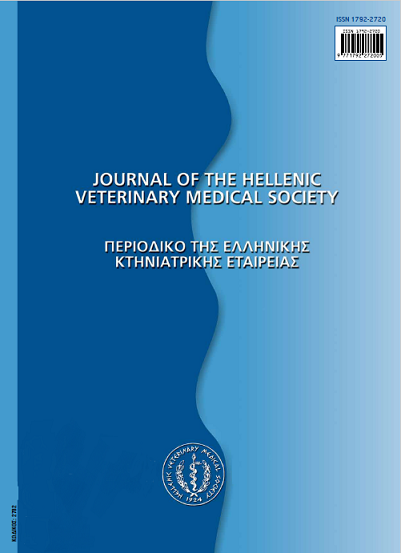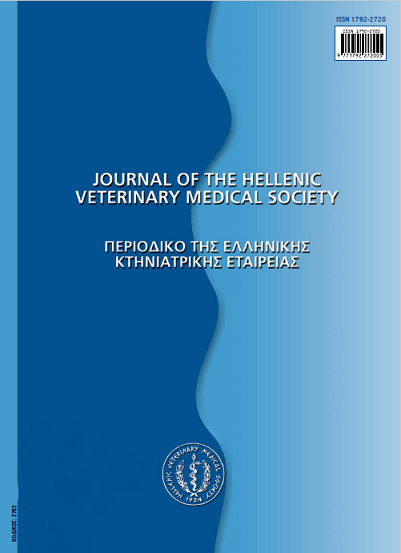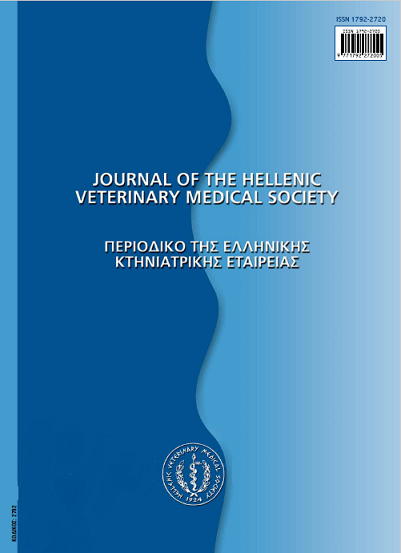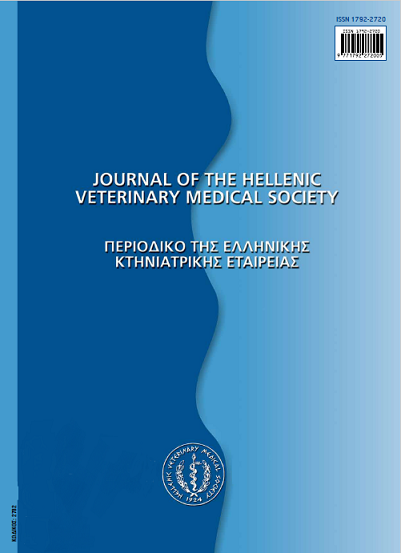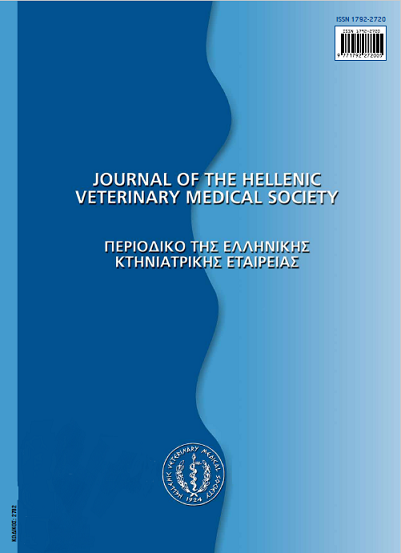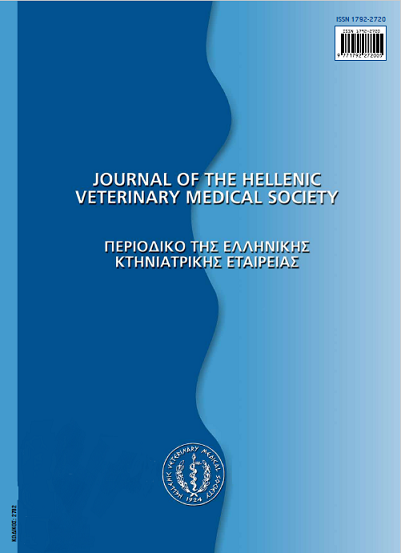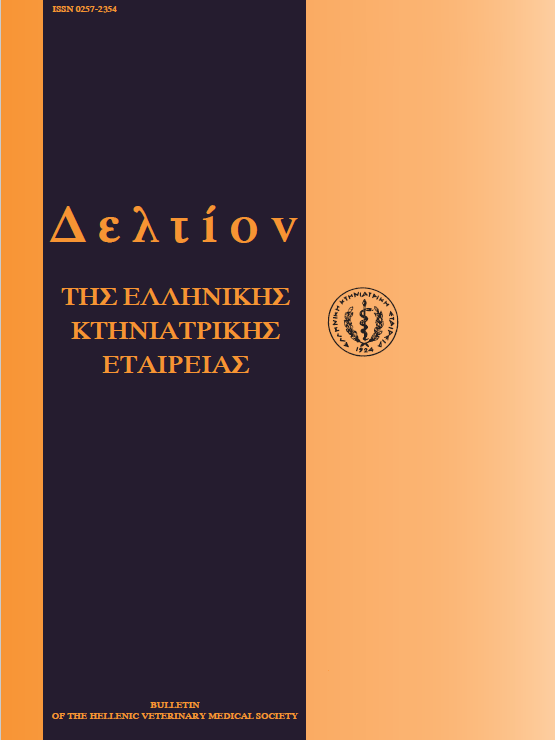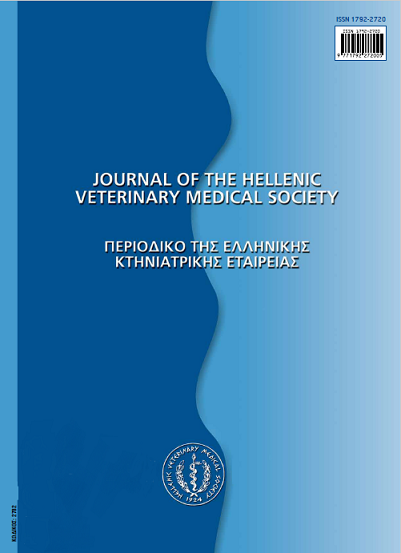Prevalence of bovine mastitis pathogens and antibioresistance of Escherichia coli isolates
Abstract
Nine hundred and fifty two milk samples from clinical bovine mastitis cases, originated from 269 farms in Northern Greece, were tested. Escherichia coli was isolated in 49.3% of samples. Furthermore, Staphylococcus spp, Corynebacterium spp, Streptococcus spp, Pseudomonas spp, Proteus spp, Klebsiella spp or a combination of the above bacteria were isolated. The bacteriological result from 4.3% of samples was negative. No correlation between clinical mastitis cases and seasonal variation was observed. Resistance of E. coli isolates to tetracycline was 82-96%, to enrofloxacin 10-30%, to gentamicin 58-80%, to cephalosporins 47-75%, to sulfamethoxazole-trimethoprime 46-81%, to ampicillin 71-92% and to neomycin 83-97%. The highest resistance rate and the appearance of multi-resistant isolates of E. coli (6%), to 8 antibacterials, were recorded during the last year of the survey.
Article Details
- Zitationsvorschlag
-
ZDRAGAS (Α. ΖΔΡΑΓΚΑΣ) A., TSAKOS (Π. ΤΣΑΚΟΣ) P., & ANATOLIOTIS (Κ. ΑΝΑΤΟΛΙΩΤΗΣ) K. (2017). Prevalence of bovine mastitis pathogens and antibioresistance of Escherichia coli isolates. Journal of the Hellenic Veterinary Medical Society, 55(2), 113–119. https://doi.org/10.12681/jhvms.15162
- Ausgabe
- Bd. 55 Nr. 2 (2004)
- Rubrik
- Research Articles
Authors who publish with this journal agree to the following terms:
· Authors retain copyright and grant the journal right of first publication with the work simultaneously licensed under a Creative Commons Attribution Non-Commercial License that allows others to share the work with an acknowledgement of the work's authorship and initial publication in this journal.
· Authors are able to enter into separate, additional contractual arrangements for the non-exclusive distribution of the journal's published version of the work (e.g. post it to an institutional repository or publish it in a book), with an acknowledgement of its initial publication in this journal.
· Authors are permitted and encouraged to post their work online (preferably in institutional repositories or on their website) prior to and during the submission process, as it can lead to productive exchanges, as well as earlier and greater citation of published work.

